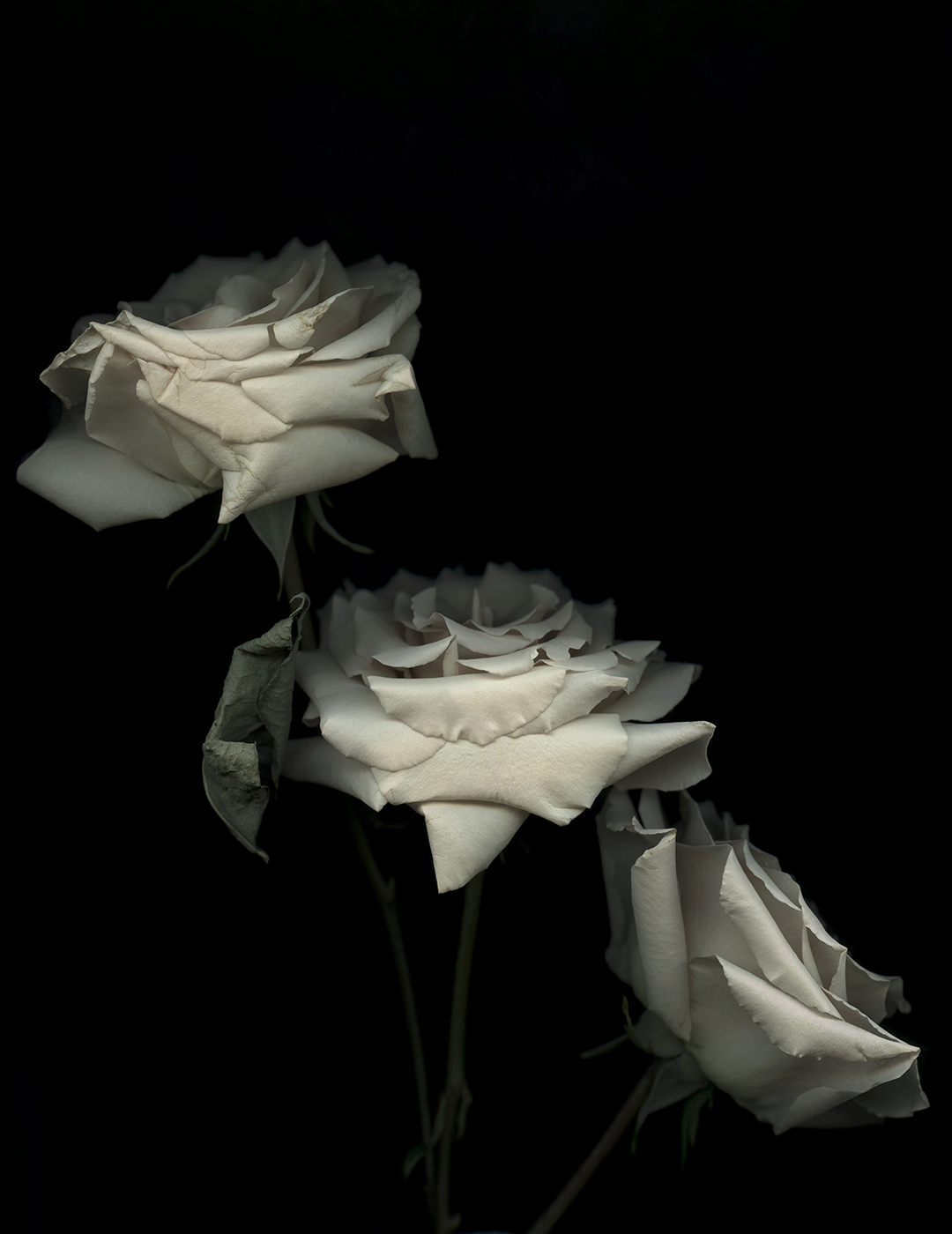BARBARA STEINMAN: KEEPING TIME
Barbara Steinman: Keeping Time, photographic portfolio. Introduction by Zoë Tousignant, Border Crossings, Issue 159, 2022
For the past few years popular literature on psychology has been dominated by the notion that being connected to the present moment brings happiness. The vast number of books dedicated to the topic is evidence that it is not easy to cease focusing on what you cannot change (the past) and what you cannot control (the future). The challenge is greater still when the present moment is problematic when, for example, a global pandemic is forcing a complete reorganization of the way everyone lives and works. In times of heightened stress and uncertainty, disconnecting can be a way of surviving.
In September 2020, six months after the first lockdown was announced in Quebec, Montreal artist Barbara Steinman began her new series, Keeping Time, 2020-2021. Over the next few months, she produced several hundred photographs of flowers carefully posed or haphazardly placed against a black background. For a few hours every day, she would go to her studio and photograph the various stages in the life cycle of the cut flowers she acquired from a local florist. The act of making these images – of systematically spending time in the studio and applying the precise method selected – would become central to the work. The process, which included scrupulously noting the date and the type of flower depicted for each photograph, allowed the artist to give structure and meaning to an otherwise endless flow of undifferentiated days. Steinman explains: “As telling time became blurry, it was the changes in the flowers and trees around me that proved time was passing. This was reassuring. One day, looking at an exquisite flowering tree, I thought, ‘At least you’re keeping time.'”
In the months before March 2020, Steinman had been preparing an exhibition for the Olga Korper Gallery in Toronto. When the show was postponed, she was left without a fixed deadline to work toward (or against). For many artists, deadlines for exhibitions, grant proposals and reports act as a motivating factor and an organizing principle in their practice. For Steinman, whose work is conceptual, multimedia and often site-specific, such time constraints are invariably accompanied by a series of technical and administrative obligations that require careful navigation. In making the series Keeping Time, she was able to take pleasure in an artistic process that was free from external pressures. As she describes it, the experience even had the effect of renewing her faith in being an artist.
A selection of images from the series was shown in June 2021. The images were predominantly roses, a species the artist was drawn to in part for their sometimes garish, artificially produced colours. The works were printed on very matte, fibrous paper chosen to give more depth to the black background and to enhance the delicate texture of the dehydrating blooms. Always arranged in vertical compositions, the flowers filled the frame, offering themselves in richly detailed close-up views as they bore silent witness to the progress of decomposition.
Businesses related to flowers were suffering because of the pandemic since, under normal circumstances, they relied heavily on special occasions and large social gatherings, like weddings and funerals. The cut flower industry’s supply chain was also being compromised by the lockdown, which meant that imports, and therefore most flowers, were hard to come by. (A large proportion of the flowers sold in Canada are grown abroad, even though the country is also an important producer.) The donated specimens the artist was bringing back to her studio were past their prime and not saleable despite their newly acquired rarity. Seen as images whose subject was at the centre of an intricate global system and whose equilibrium was being seriously tested, Steinman’s flowers appear more fragile still.
After presenting the works in exhibition, the artist received emails from viewers sharing their reactions. Many had clearly been moved by their visit and expressed appreciation of the palpable sense of tension between the delicate beauty and dark, mournful power conveyed by the images. Flowers have always been emblems of impermanence, and Steinman’s are no exception: as photographs of singular fragments of time, they celebrate a particular stage in a life cycle, while pointing to impending demise. It may be that these works gave visitors to the exhibition an opportunity to connect to the moment pictured, but also to the moment of the visit itself. Such an experience of presentness, as difficult as it may be to achieve and sustain, possibly offers the interior space in which to process the overwhelming sense of grief that has permeated the past two years. And coping with grief cannot be rushed. It takes time.
Zoë Tousignant is a photography historian based in Montreal. She is the curator of photography at the McCord Museum.

